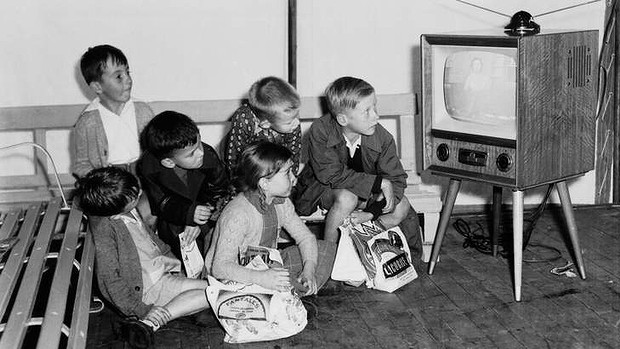Children's Television Conference
The Story of Children’s Television – An International Conference

Accompanying the major exhibition ‘The Story of Children’s Television, 1946 to the Present Day’, a collaboration between the Herbert Art Gallery and Museum and the University of Warwick, this conference seeks to combine discussion of the history of children’s programming with analysis and reflection on the current landscape of children’s television and its future. The conference wishes to acknowledge and analyse the significance of children’s programming in the broader context of television production, and to discuss its production as both a creative process and a business enterprise. It will reflect on the place of children’s television in the broader history of the medium, and in relation to notions of cultural heritage, collective remembering and nostalgia. It also offers a space for scholars to consider the impact of change on the production and circulation of children’s television, and for discussion about viewing practices and the particular issues raised by studying the child viewer.
Provisional Structure for 'The Story of Children's Television' Conference, July 2015
Monday 6th July
9-10am Registration
10.00- 11.20 Parallel Session One
A
International Perspectives on Producing Television for Children
Aroldi: Public Service Broadcasting and Kids TV in Italy, 1954-2014
Coulter: Telling the Untold Story: Canada's Role in the History of Children's Television Industry
Potter: Producing Contemporary Children's Television
B
Children's Television Drama
Cowell: Children's Horror Television: Cautionary Tales and 'The Sticky End'
Woods: Teenage Drama in Children's Television Schedules: Tracing the Pre-Echoes of British Youth Television
Smart: ‘Tom Grattan’s War: The great war from a boy’s perspective’
11.20-12.20 Introduction to conference by organisers and Keynote: Dafna Lemish - Television, Childhood and Fear
12.20- 1.10 Lunch -
1.10- 2.40 Parallel Session 2
A
Television for Children at the BBC: Histories
Bloore: 'The Miss with a Million Children': Biddy Baxter and the institution of Blue Peter
Charlesworth: Whatever happened to Uncle Cecil? Opening the BBC Archives....
Holmes: Revisiting Playschool: A Historical Case Study of the BBC's address to the Pre-school Audience
B
Children's Reception of Television
Nutbrown: Watching the Twirlywoos
Räder: Tastes of Children in East Berlin (1961-5)
Scott: Children making meaning in the inter-media textual web
2.40-3.20 Tea/coffee break
3.20-4.50 Parallel Session 3
A
Transnational Television for Children
Pope/Kleeman: A Brit and a Yank a Walk into a Bar
Strandgaard Jensen: As Culture Free as TV Can Be: National Identities and Universal Truths in Children's Television
Sakr: Recreating the Magic? The Story of Sesame Street’s Gulf Co-Productions from the 1970s to 2010s.
B
Animation I: Smallfilms
Lawrence: Animation and the Uncanny in Tottie: The Story of a Doll's House (1984)
Lloyd: 'And on the second day we painted it out and started again': Clangers and Home-made Britain
Moseley: Ontologies of Stop-Frame Animation: The Case of Smallfilms
4.50-5.30pm Travel to city centre
5.30-7.00 Industry Panel at the Herbert – Estelle Hughes, Sara Harkins, Jenny Buckland and a representative from the Children's Media Foundation
7.00pm Drinks reception at Herbert Art Gallery and Museum and time to explore the exhibition
8.00-10.30pm Free time to get dinner in the city - the bus will take you back to campus at 10.30
Tuesday 7th July
9.15- 11.00 Parallel Session 4
A
Animation II: Animated Television for Children in Europe
Elif Baykal: Turkish Children's Television
Kucharska: 'The Importance of Bedtime Stories: Cultural and Social Significance of Evening Children's Television in Poland'
Locuviche: ‘The Minimalist boy: some considerations of Pocoyo’s international success’
B
Children's Television in the Multi-Media Environment
Gozansky: Israeli Daily Drama as Children's Television's Answer to New Media
Frolova: Digital a Television, 'Screens' and the Blurring Boundaries between Media and Media Devices in the Home
Woodfall: Is there such a Thing as Children's Television Anyway?
Gomes: Quality of TV programmes for children: a comparative analysis between France and Brazil.
11-11.30 Tea/coffee break
11.30- 1.00 Plenary Session
Television for Children at the BBC: Histories and Futures
Carter and Allan: Remembering BBC Newsround
Messenger Davies/Steemers: BBC Children's: Past Present and Future Generations
Smith: In the Broom Cupboard
1.00-2.00 Lunch
2.00-3.00 Keynote by Karen Lury – Television, children and care
3.00-4.30 Parallel Session 6
A
Performance, camp and disability in British Children’s Television
Holdsworth: Someting Special: Care, Pre-School Television and the Dis/Abled Child
Medhurst: Of limp-wrested lions, pink hippos and handbags: facets of kid camp on British Children's television
B
Nostalgia, Generation, Memory and Music in American Children's Television
Kennedy: Keeping it Real, Keeping it in the Family: Authenticity, Family and Country Music Stardom in Hannah Montana
Pillai: It's Only a Record Charlie Brown: Vince Guaraldi, Wynton Marsalis and Nostalgia as Commodity
Thompson: Flows and Gaps of Nostalgia in Girl Meets World: Reframing 1990s US Children's Television
4.30-5.00: Tea
5-6pm Remembering Children’s Television? (Amy Holdsworth, Joanne Garde-Hansen, Kristyn Gorton, representatives from the Herbert)
END
